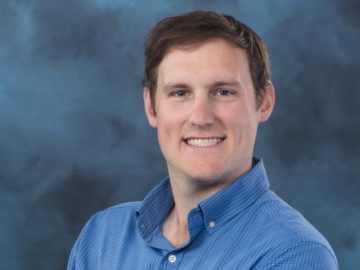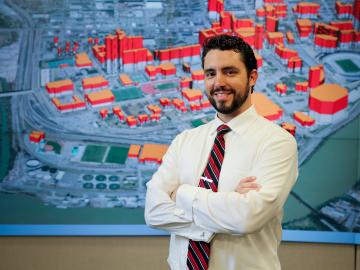
Filter News
Area of Research
- Advanced Manufacturing (6)
- Biology and Environment (15)
- Computational Biology (1)
- Computational Engineering (1)
- Computer Science (4)
- Electricity and Smart Grid (1)
- Energy Science (40)
- Functional Materials for Energy (2)
- Fusion and Fission (5)
- Fusion Energy (1)
- Isotopes (2)
- Materials (66)
- Materials Characterization (2)
- Materials for Computing (12)
- Materials Under Extremes (1)
- National Security (4)
- Neutron Science (32)
- Nuclear Science and Technology (4)
- Supercomputing (24)
News Type
News Topics
- (-) Big Data (26)
- (-) Biomedical (18)
- (-) Chemical Sciences (31)
- (-) Composites (16)
- (-) Exascale Computing (11)
- (-) Frontier (10)
- (-) Materials (70)
- (-) Nanotechnology (25)
- (-) Neutron Science (42)
- (-) Polymers (15)
- 3-D Printing/Advanced Manufacturing (57)
- Advanced Reactors (18)
- Artificial Intelligence (33)
- Bioenergy (26)
- Biology (31)
- Biotechnology (6)
- Buildings (31)
- Clean Water (14)
- Computer Science (70)
- Coronavirus (15)
- Critical Materials (13)
- Cybersecurity (9)
- Emergency (2)
- Energy Storage (50)
- Environment (67)
- Fossil Energy (1)
- Fusion (19)
- Grid (28)
- High-Performance Computing (33)
- Hydropower (6)
- Irradiation (3)
- Isotopes (15)
- ITER (5)
- Machine Learning (19)
- Materials Science (54)
- Mathematics (3)
- Mercury (3)
- Microscopy (21)
- Molten Salt (6)
- National Security (13)
- Nuclear Energy (36)
- Partnerships (11)
- Physics (11)
- Quantum Computing (9)
- Quantum Science (18)
- Security (4)
- Simulation (16)
- Software (1)
- Space Exploration (11)
- Statistics (1)
- Summit (11)
- Transportation (52)
Media Contacts

A research team led by the University of Maryland has been nominated for the Association for Computing Machinery’s Gordon Bell Prize. The team is being recognized for developing a scalable, distributed training framework called AxoNN, which leverages GPUs to rapidly train large language models.
Verónica Melesse Vergara and Felipe Polo-Garzon, two staff members at ORNL have been honored with Luminary Awards from Great Minds in STEM, a nonprofit organization dedicated to promoting STEM careers in underserved communities.

A team of researchers used the Frontier supercomputer and a new methodology for conducting a genome-wide association study to earn a finalist nomination for the Association for Computing Machinery’s 2024 Gordon Bell Prize for outstanding

A multi-institutional team of researchers led by the King Abdullah University of Science and Technology, or KAUST, Saudi Arabia, has been nominated for the Association for Computing Machinery’s 2024 Gordon Bell Prize for Climate Modelling.

Oak Ridge National Laboratory researchers are using a new bioderived material to 3D print custom roosting structures for endangered bats.

Researchers led by the University of Melbourne, Australia, have been nominated for the Association for Computing Machinery’s 2024 Gordon Bell Prize in supercomputing for conducting a quantum molecular dynamics simulation 1,000 times greater in size and speed than any previous simulation of its kind.

Researchers have developed and 3D printed the lightest crack-free alloy capable of operating without melting at temperatures above 2,400 degrees Fahrenheit, which could enable additively manufactured turbine blades to better handle extreme temperatures, reducing the carbon footprint of gas turbine engines such as those used in airplanes.

ORNL researchers were honored with a prestigious ACE Award for Composites Excellence by the American Composites Manufacturers Association. The team won the “innovation in green composites design” prize for creating a fully recyclable, lightweight wind turbine blade tip that incorporates low-cost carbon fiber and conductive coating for enhanced protection against lightning strikes.

ORNL’s Matthew Loyd will receive a Department of Energy Office of Science Early Career Research award.

ORNL’s Joshua New was named the 2024 Researcher of the Year by R&D World magazine as part of its R&D 100 Professional Award winners.


